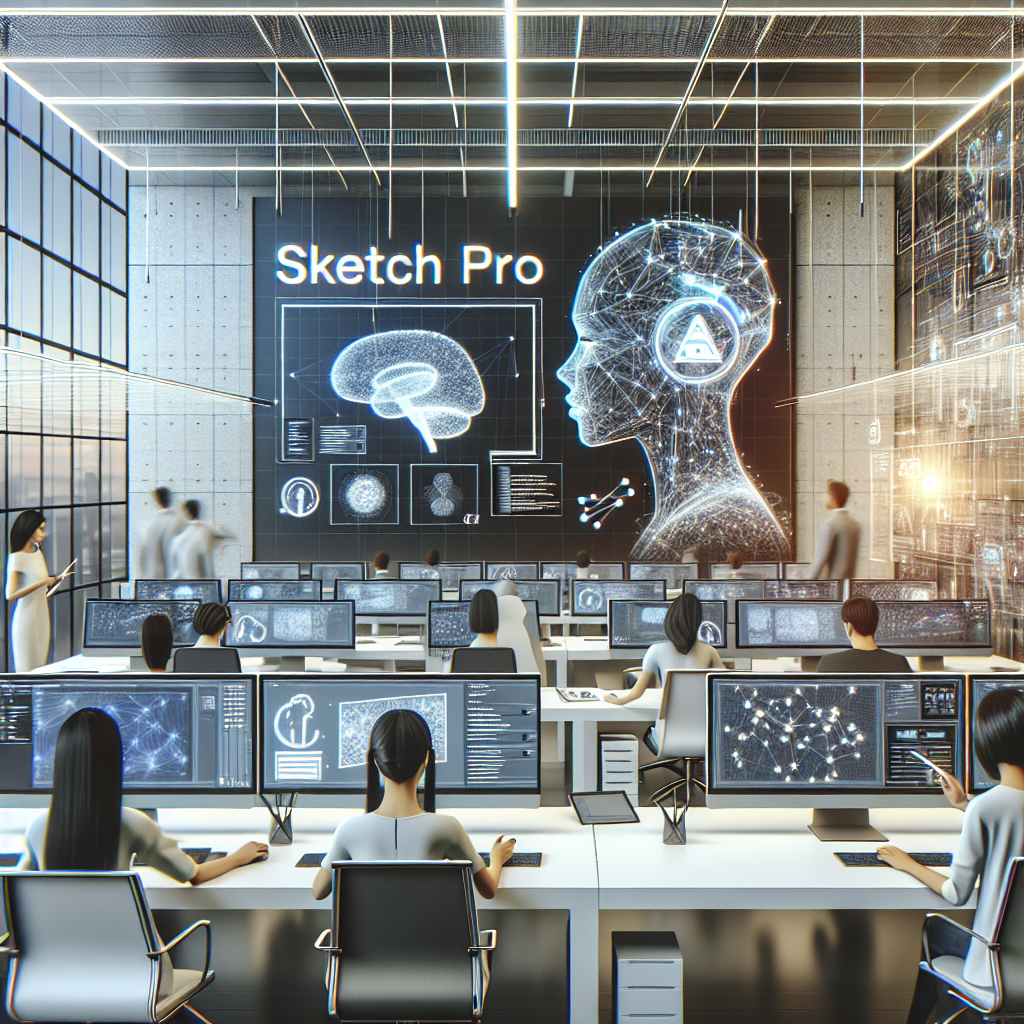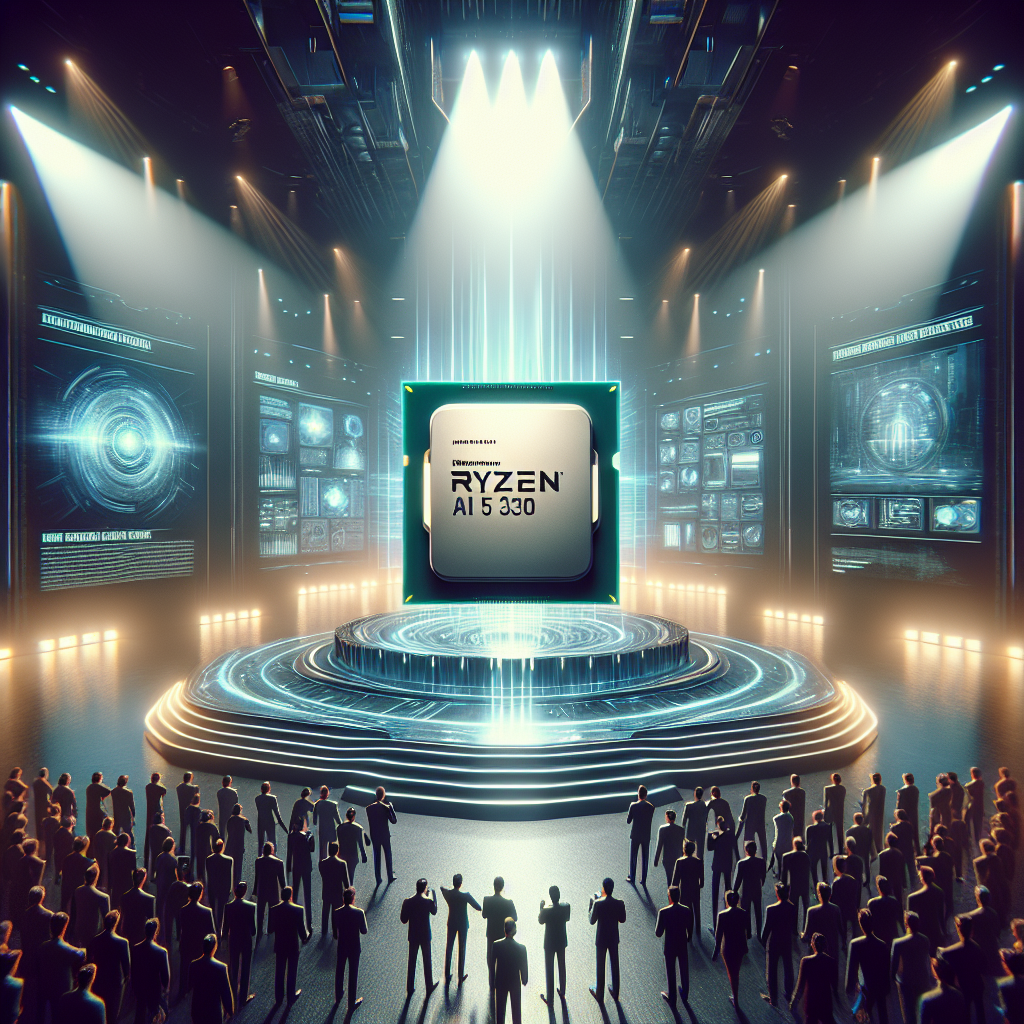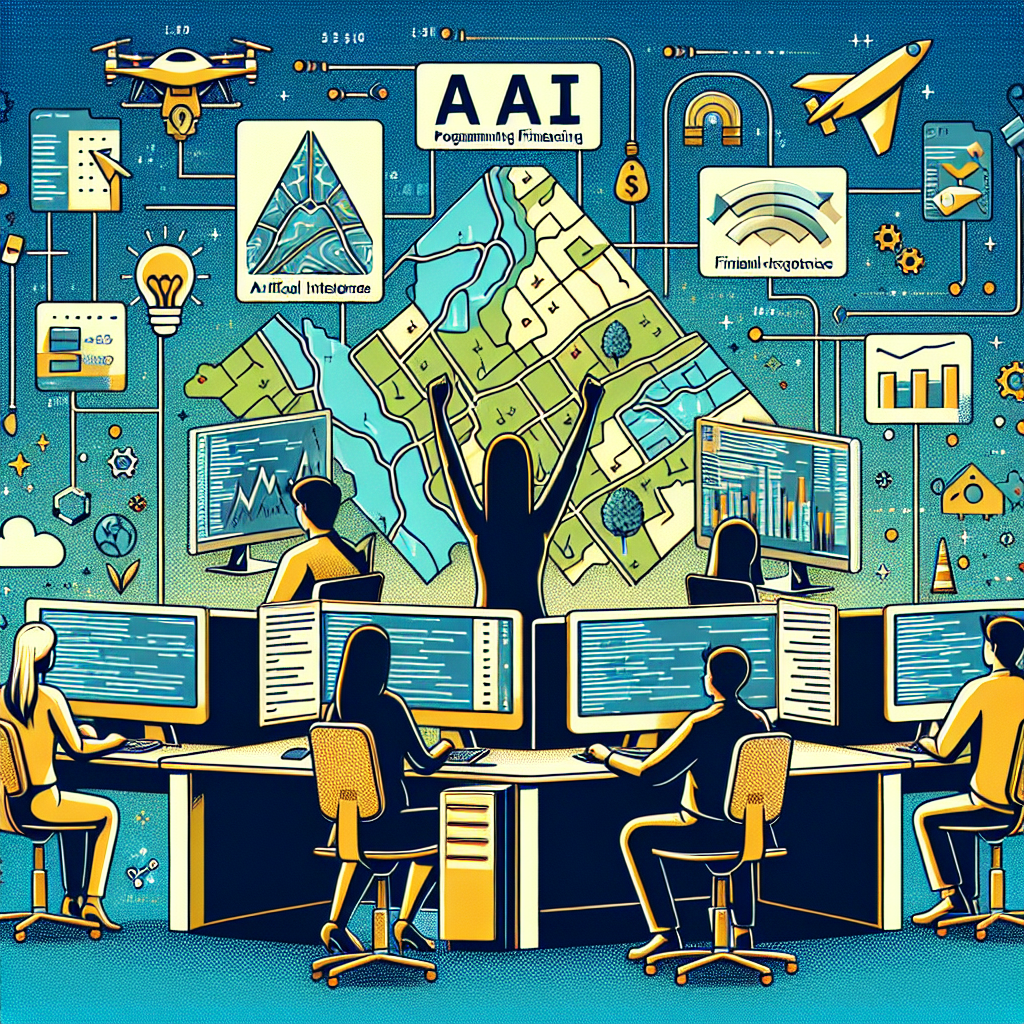-
AI-Driven Design Hubs – Unilever Leans into AI Design Content with ‘Sketch Pro’ (TrendHunter.com)

In a significant advancement within the realm of creative design, Unilever has unveiled its latest initiative named ‘Sketch Pro.’ This AI-driven design hub marks a transformative shift in how brands are engaging with their audience through content generation and storytelling. Leveraging cutting-edge artificial intelligence technologies, Unilever aims to redefine traditional design processes, enhancing efficiency and creativity in a rapidly evolving digital landscape.
At the heart of this initiative is Unilever’s commitment to adopting AI-powered creative automation tools. The emergence of tools like Google’s ‘Veo 3’ and Adobe’s ‘Firefly’ is indicative of a broader trend where creative processes are increasingly automated. These AI tools play a crucial role in reducing production timelines, allowing brands to pivot quickly and adapt to market demands. For leaders in the industry, this signals not just an operational upgrade, but a tremendous opportunity to refocus resources on strategizing and innovating.
One of the most striking features of ‘Sketch Pro’ is its ability to facilitate social-first storytelling. In an era where linear advertising is becoming obsolete, brands need to connect with their audience through compelling narratives tailored for digital consumption. Unilever’s new platform supports the creation of dynamic content that resonates with social media users, effectively enhancing engagement rates. As digital marketing garners more weight in overall branding strategies, this shift signifies a critical alignment with contemporary consumer preferences.
Moreover, the launch of ‘Sketch Pro’ highlights the growing importance of adapting to the fast-paced world of social media marketing. The emphasis on producing content that isn’t just visually appealing but also narratively engaging reflects a deeper understanding of the modern consumer’s expectations. The ability of brands to craft relatable and shareable stories directly impacts their visibility and engagement on platforms like Instagram, TikTok, and Twitter.
While ‘Sketch Pro’ is still in its early stages, its potential is vast, especially for businesses that recognize the importance of integrating AI technology into their marketing frameworks. With the capacity to streamline the design process, brands can potentially achieve faster turnarounds for campaigns without compromising on creativity or quality. This means that the ability to stay ahead of competitors might hinge on how effectively brands utilize these emerging AI tools.
In addition to increasing efficiency, AI tools can offer deeper insights into consumer behavior. By analyzing engagement metrics and social media interactions, businesses can refine their strategies based on real-time feedback. This data-driven approach cultivates a more agile marketing framework, allowing for the quick adaptation of content and messaging, ultimately driving better results.
Business leaders, product builders, and investors should take notice of the innovations being introduced in the intersection of AI and creative design. The integration of AI into marketing not only enhances customer relationships but establishes significant competitive advantages. Companies that capitalize on these technologies quickly can reposition themselves to better meet the demands of their target audience.
In conclusion, Unilever’s ‘Sketch Pro’ offers a glimpse into the future of AI-driven design, where technology and creativity converge to redefine the marketing landscape. As more brands explore the potential of AI in their strategic efforts, we can expect to see a wholesale transformation in how products are positioned and stories are told. Keeping abreast of these developments is essential for any business leader looking to thrive in this new era of marketing.
-
Slack will generate thread summaries and AI notes from your huddles now

In a major move to bolster workplace productivity and communication, Slack has unveiled four new AI-powered features that aim to transform how teams collaborate within its platform. Announced recently, these features are designed to serve as a smart digital assistant, automating routine tasks and allowing team members to focus on what matters most.
Now available for subscribers to its Pro, Business+, and Enterprise+ plans, these innovations promise to streamline access to information and improve navigation within the Slack environment. One of the standout features, Enterprise Search, allows users to retrieve information effortlessly by posing questions in natural language. This function mimics an AI chatbot’s search capability, accessing relevant files, team conversations, company documents, PDFs, and images to deliver precise answers that can enhance decision-making and productivity.
Another significant enhancement is the introduction of channel recaps and thread summaries. For team members who may join discussions mid-thread, these AI-generated outlines summarize crucial conversations, enabling quick catch-up without scrolling through lengthy message chains. This initiative aims to save time and promotes effective communication among team members.
Closely related to the channel recaps are the AI-generated meeting notes. Following team huddles, Slack will automatically generate notes that outline key information, such as immediate action items and deadlines. This feature ensures that all team members have access to the same critical information without the need for someone to manually collate notes.
Moreover, Slack has introduced real-time AI-powered translations. This feature allows teams working across different languages to communicate seamlessly within threads using their native tongues. By breaking down language barriers, Slack enhances collaboration among diverse teams and increases inclusivity in discussions.
Looking ahead, Slack has teased the launch of several additional features aimed at enhancing user experience. One upcoming feature will allow users to hover over jargon or complex terms in conversations to receive AI-generated explanations based on the organization’s unique vernacular. This functionality aims to improve understanding and foster knowledge sharing among team members.
Also on the horizon is a feature that will push customized AI-generated action items directly to a user’s activity feed whenever they are mentioned in a task-oriented message. This ensures that deadlines remain front-of-mind for team members and helps them keep track of their responsibilities more effectively.
Slack is also set to include writing tips within its canvas feature, which allows teams to collaborate on projects. This is an effort to enhance the quality of communication within the platform. For instance, Slack’s AI capabilities could provide suggestions for improving clarity and engagement in team documents.
A notable overhaul will be the introduction of a new unified files view. This feature is designed to reimagine Slack’s interface, allowing users to easily locate all shared assets—documents, canvases, and more—without the arduous task of sifting through extensive chat histories. This initiative aims to enhance efficiency and access to resources, making collaboration even more effective.
As with many enterprise-level AI initiatives, Slack’s new features are oriented towards assistant-level support, focusing on reducing busywork and simplifying operational tasks. Similar strategies have been employed by giants like Microsoft and Google, which incorporated their AI technologies into their productivity suites.
The roll-out of these features positions Slack as a leader in the productivity software space, setting a new standard for how AI can be harnessed to facilitate workplace collaboration and enhance efficiency. As the landscape of workplace communication evolves, these advancements highlight the significant role of AI in streamlining daily operations and supporting team effectiveness.
-
AWS Launches Bedrock AgentCore for Enterprise AI Agents

Amazon Web Services (AWS) has recently unveiled its latest innovation, the Bedrock AgentCore, designed specifically for enterprise AI agents. This launch comes at a time when businesses are rapidly integrating artificial intelligence across various sectors, and AWS aims to solidify its leadership position in this highly competitive market.
The Bedrock AgentCore is a robust platform that allows enterprises to build and deploy AI-driven agents more efficiently. It leverages the power of AWS’s extensive cloud infrastructure and advanced machine learning capabilities, offering businesses the tools they need to create highly functional and sophisticated AI agents. With the rise of AI in customer service, technical support, and other areas, having a dependable framework like Bedrock is crucial for organizations looking to enhance their operational efficiency.
One of the standout features of Bedrock AgentCore is its scalability. Organizations of various sizes can benefit from it, whether they are small startups or large corporations. This flexibility ensures that as a business grows, its AI infrastructure can evolve accordingly without the need for drastic restructuring. Furthermore, Bedrock’s integration with popular AWS services means that users can leverage existing tools and services that they’re already familiar with.
In terms of technical depth, Bedrock AgentCore supports various programming languages and frameworks, which allows developers to work within a familiar environment. This accessibility will aid in faster development cycles and facilitate seamless integration with other systems. Moreover, the platform’s design focuses on ease of use, making it approachable even for those with limited experience in AI and machine learning.
AWS recognizes the importance of data privacy and security, particularly in enterprise contexts. Bedrock includes robust security protocols that allow businesses to maintain control over their data and ensure compliance with industry regulations. With growing concerns about data privacy, this feature will be appealing to many organizations, especially those handling sensitive customer information.
Beyond technical specifications, the commercial implications of Bedrock AgentCore are significant. By empowering companies to create their own AI agents, AWS positions itself as an essential partner in their digital transformation journeys. This not only enhances the value proposition of AWS services but also fosters customer loyalty as businesses begin to rely more heavily on AWS for their AI needs.
As organizations increasingly prioritize automation and AI, Bedrock AgentCore promises substantial business value. Companies can reduce operational costs, improve customer interactions, and streamline various processes through the use of intelligent AI agents. The platform is a timely response to a growing demand for efficient, scalable, and effective solutions in a data-driven world.
Despite the promising features and potential, some gaps in information remain regarding specific metrics related to the performance of Bedrock AgentCore. Details regarding its pricing strategy and user adoption rates have not been disclosed, which will be important indicators of its success in the marketplace.
In conclusion, the launch of AWS Bedrock AgentCore represents a significant advancement in the field of enterprise AI. By providing companies with the tools they need to develop and deploy AI agents quickly and securely, AWS is not only meeting the current market demands but also paving the way for future innovations. As businesses continue to explore the possibilities of AI and automation, Bedrock AgentCore is poised to become a key player in the evolution of enterprise technology.
-
OpenTable launching AI assistant ‘Concierge’

On July 16, OpenTable took a significant step in automating the dining experience by launching its new generative AI assistant, aptly named “Concierge.” This innovative tool aims to streamline the booking process for diners across OpenTable’s vast network of 60,000 restaurants worldwide. By integrating essential research and discovery features directly into the booking interface, Concierge is set to change how people reserve tables.
The booking process can often be cumbersome, with diners faced with numerous questions regarding dietary restrictions, menu items, and restaurant policies. These inquiries can easily add 15 minutes or more to the reservation process, leading to frustration and potential no-shows. Concierge has been specifically designed to tackle these challenges head-on, providing diners with instant answers to their questions. This capability not only enhances the user experience but also encourages more individuals to finalize their bookings.
One of the standout features of Concierge is its ability to aggregate necessary information without the need for diners to navigate away from the booking platform. Instead of spending time searching for reliable information elsewhere or waiting to speak with a restaurant’s staff, users can receive comprehensive answers in real-time. This convenience facilitates faster and more confident booking decisions, ultimately leading to a more efficient dining experience.
First impressions of Concierge suggest that it is a game-changer for both customers and restaurants. Diners can benefit from faster decision-making and increased satisfaction, while restaurants can expect improved booking rates and enhanced communication from customers. Many diners have abandoned the reservation process altogether due to a lack of reliable information, or they may have opted for a less suitable dining option simply because they could not find the necessary details quickly enough. With Concierge, OpenTable is positioned to decrease these challenges significantly.
In its current iteration, Concierge is focused on answering commonly asked questions. However, OpenTable has ambitious plans for future updates. The company envisions a seamless conversational interface where diners can make bookings solely through direct prompts. This development would enhance user engagement and make the process even more intuitive, catering to the growing demand for hands-free technology.
As the landscape of dining continues to evolve, technology plays an integral role in shaping consumer experiences. AI tools like Concierge not only improve customer satisfaction but also enhance operational efficiency for restaurants. Businesses in the hospitality sector can save valuable time and resources by integrating AI-powered solutions into their reservation system, allowing staff to focus more on in-person customer service rather than administrative tasks.
The implications of Concierge extend beyond just OpenTable. As one of the first major platforms to introduce a dedicated AI assistant for restaurant bookings, it sets a precedent for the industry. It will likely encourage competitors to adopt similar technologies, leading to a greater push toward automation and improved customer interactions across the sector. Furthermore, as the AI technology behind Concierge continues to develop, we can only expect more features and capabilities to arise, further transforming the dining landscape.
For business leaders and investors, the emergence of Concierge signals a critical shift in how AI and automation can be leveraged to enhance customer experiences and drive growth. Companies that recognize the importance of integrating AI into their operations are better positioned to increase their market share and retain customer loyalty. As consumers become more accustomed to using technology for everyday tasks, the demand for intelligent solutions in the hospitality industry will only increase.
In conclusion, OpenTable’s Concierge represents a remarkable advancement in the intersection of dining and technology. By harnessing the power of generative AI, this new assistant not only simplifies the reservation process but also sets a new standard for customer engagement in the restaurant industry. As the tool evolves, it will be fascinating to witness how it influences both customer behavior and business operations across the hospitality landscape.
-
AMD Intros Ryzen AI 5 330 Mainstream Mobile Processor

AMD has launched a groundbreaking product in the form of the Ryzen AI 5 330, a mainstream mobile processor designed specifically for Microsoft Copilot+ ready notebooks. This new addition aims to provide a budget-friendly option that still delivers impressive performance for a variety of AI applications. With its innovative architecture and features, the Ryzen AI 5 330 is poised to enhance the functionality of everyday computing devices.
The Ryzen AI 5 330 is notable for being built on a cut-down variant of AMD’s 4 nm “Strix Point” monolithic silicon. This provides a compact yet powerful solution for notebook manufacturers, with a slim CPU complex optimized for efficiency without compromising on performance. The processor features a 4-core, 8-thread architecture, though precise details regarding the balance between the “Zen 5” and “Zen 5c” cores have not been disclosed. The effective configuration ensures that users will enjoy smooth multitasking capabilities.
One of the standout features of this processor is its dedicated Neural Processing Unit (NPU), the XDNA 2 unit, which is capable of delivering 50 TOPS (Tera Operations Per Second). This is crucial for accelerating AI-based applications such as Copilot+, which relies on machine learning algorithms to enhance productivity. Users can expect reduced latency and improved real-time processing as they engage with AI-driven mechanisms.
Another impressive specification is the total cache size of 12 MB, consisting of an 8 MB L3 cache and 4 MB of combined L2 cache across the different core types. This cache configuration is conducive to efficient data processing, ensuring that frequently accessed data is swiftly available to the CPU. With a base clock speed of 2.00 GHz and a maximum boost frequency of 4.50 GHz, the Ryzen AI 5 330 promises ample computational power for a wide variety of applications.
The integrated graphics processing unit (iGPU) within this chip, known as the Radeon 820M, features 2 compute units with a total of 128 stream processors. This allows for fluid graphics performance in less demanding scenarios, making it suitable for casual gaming and multimedia tasks. The configuration supports a balanced approach between CPU and GPU workloads, which is essential for mobile environments where efficiency is paramount.
AMD has taken into account the varying needs of consumers by enabling a configurable thermal design power (TDP) ranging from 15 W to 28 W. This flexibility means that device manufacturers can optimize power consumption based on the intended use case, thus preserving battery life without sacrificing performance. As a result, users will find notebooks powered by the Ryzen AI 5 330 to be not only capable but also energy-efficient.
There is considerable excitement surrounding the anticipated launch of notebooks featuring the Ryzen AI 5 330, particularly as the price point for these devices is expected to come in well under the $500 mark. For budget-conscious consumers, this represents an accessible entry into advanced computing technology that supports cutting-edge AI capabilities. As we move towards an increasingly AI-centric future, the role of processors like the Ryzen AI 5 330 will be critical in shaping the landscape of mainstream computing.
In summary, with the introduction of the Ryzen AI 5 330, AMD is not only reinforcing its commitment to exciting technological advancements but is also delivering practical solutions that cater to emerging market demands. The combination of a robust architecture, efficient power management, enhanced AI capabilities, and cost-effectiveness sets a strong foundation for AMD’s positioning in the mobile processor market. Companies looking to leverage AI in their hardware offerings would do well to consider this innovative processor as a benchmark for their next-generation notebooks.
-
Pennsylvania Digital Forgery Law Targets AI Scams and Financial Exploitation

Pennsylvania has taken a significant step in combating the rising threat of digital deception with the introduction of a new law that addresses AI-driven fraud and financial crimes. The law makes it a felony to use artificial intelligence to create non-consensual “forged digital likenesses,” including deepfakes and voice clones, aimed at injuring, financially exploiting, or scamming individuals.
The legislative initiative, signed into law by Governor Josh Shapiro, empowers prosecutors to charge individuals who utilize AI-generated fake content for fraudulent purposes with a third-degree felony. This legislative effort is particularly focused on preventing tragedies where wrongdoers impersonate family members, such as faking a grandchild’s voice to manipulate older adults into transferring money.
Senator Tracy Pennycuick, the driving force behind the bill, expressed pride in the bipartisan support that led to this crucial legislation. She emphasized that the law presents law enforcement with robust tools to hold accountable those who engage in digital deceit, thereby creating a deterrent effect against potential criminals.
The urgency of this law stems from alarming statistics regarding the vulnerability of older adults. The Department of Aging reported nearly 18,500 cases of financial exploitation in 2023-24, accounting for almost a third of all abuse reports. Shockingly, the number of exploitation cases has nearly doubled since 2017, underscoring the mounting dangers faced by the elderly population.
According to Jason Kavulich, Secretary of Aging, the continuous rise in scams targeted at older adults has made financial exploitation the most common type of abuse reported. He added that increasingly sophisticated technology creates a semblance of familiarity for victims, leading to devastating consequences.
In response to this alarming trend, the Pennsylvania Department of Banking and Securities (DoBS) has been active in educating residents on recognizing potential AI-driven scams and identity theft. In 2024, DoBS reached out to nearly 35,000 citizens through various free events and programs, addressing over 10,000 consumer inquiries and aiding in the recovery of millions for affected consumers.
Moreover, the Pennsylvania Insurance Department (PID) is taking proactive measures to oversee the use of AI within the insurance sector. Guidance issued by PID last year reiterated that insurance decisions influenced by AI must adhere to relevant laws while also safeguarding consumers against unfair discrimination and inaccuracies.
Insurance Commissioner Michael Humphreys highlighted the dual nature of advancing technology, noting its advantages while warning that it also presents opportunities for scammers. He affirmed that this new law assists in holding wrongdoers accountable while advising the public to verify unsolicited calls or offers that appear too good to be true.
Additionally, the state has established a dedicated hotline, a website, and an email address to facilitate the reporting of scams and to assist residents in resolving financial and insurance inquiries. This initiative helps direct residents to the appropriate agency for a myriad of issues including denied insurance claims, suspicious financial transactions, student loan scams, or utility-related concerns.
This comprehensive approach, spearheaded by various state departments, not only aims to deter potential scammers but also to empower residents with knowledge and tools to combat fraud effectively. As technology continues to advance, the importance of such regulatory measures becomes increasingly evident, especially in protecting the most vulnerable members of society.
-
This startup just raised $15 million to create custom maps with AI for monitoring wildfire and flood risks

California-based startup Felt has recently made headlines by securing $15 million in funding to enhance its innovative platform that allows users to generate custom geospatial maps utilizing generative AI. Founded in 2021, Felt has developed a software tool designed to transform location data points into tailored map visualizations that cater to an array of business or individual needs. This innovation is particularly beneficial for sectors requiring meticulous monitoring of assets, project planning, and risk assessments, such as wildfire and flood mitigation.
According to Sam Hashemi, co-founder and CEO of Felt, the ability for cities and businesses to leverage maps is crucial in their operational decision-making. Historically, organizations have utilized geographic information systems (GIS) that amalgamate maps with critical data points, such as traffic statistics, to inform their strategies. However, Felt aims to revolutionize this approach by creating an AI-driven platform where users can input natural language prompts to yield a variety of applications, including maps, charts, and dashboards tailored to their specific requirements.
The versatility of Felt’s platform has opened up various use cases across multiple industries. From nonprofit organizations (NGOs) to insurers and emergency responders, a diverse clientele is now tapping into this technology. Notably, over half of Felt’s customers come from the energy and climate sector. Highlighting its expansive application, Hashemi mentions partnerships with companies like Brimstone, which uses the platform to advance its sustainable concrete analysis tools.
Additionally, Felt’s dashboards are equipped to monitor vital metrics such as deforestation, air quality, and flood risks. The platform has proven invaluable in addressing the growing crisis posed by wildfires, which have become an urgent concern for both insurance and utility companies. By integrating modern technology into their mitigation strategies, organizations are better positioned to respond to environmental challenges. For instance, Northern Arizona State University has harnessed Felt’s technology to create a fire-prevention tool that aids foresters in monitoring tree health, thus promoting effective measures against forest fires.
Felt employs a subscription-based revenue model tailored to businesses of varying sizes. An annual fee structure adapts to customer tiers, while also offering a free-for-individual-use model for casual users. Smaller teams can benefit from specialized rates, while larger enterprises gain access to Felt’s dedicated in-house team and bespoke expertise. This strategic pricing model maximizes accessibility while ensuring profitability as demand grows.
Despite the challenges in securing funds within climate-focused sectors, particularly given various political climates and attitudes towards environmental, social, and governance (ESG) criteria, Hashemi reported a relatively smooth fundraising process. The recent funding round, exclusive to Business Insider, was spearheaded by Energize Capital, a climate and energy investment fund, with contributions from reputable investors like Bain Capital Ventures and Footwork VC. This backing not only bolsters Felt’s growth trajectory but also signals robust interest in sustainable technology solutions.
Looking ahead, the potential for Felt’s mapping platform is immense. With climate change exacerbating the frequency of natural disasters, businesses and organizations are increasingly turning to data-driven strategies to craft informed responses. Felt’s integrated approach to geospatial analysis could set a precedent for how industries address environmental risks, while concurrently offering innovative solutions to enhance operational efficiency. This blend of technological advancement and strategic insights places Felt at the forefront of a promising market landscape, where AI and automation reshape how we visualize and respond to the world around us.
-
Shopify has quietly set boundaries for ‘buy-for-me’ AI bots on merchant sites

In an increasingly digital marketplace, Shopify is taking a bold stance on the integration of advanced AI technologies within its e-commerce ecosystem. The company recently updated its robots.txt file across merchant platforms, effectively prohibiting the use of agentic AI, which autonomously completes online tasks, including purchases. This decision is emblematic of Shopify’s broader strategy to maintain control and integrity within its services as it navigates the burgeoning field of AI-driven commerce.
The explicit disclaimer present in the robots.txt files of Shopify’s merchants now states: “Automated scraping, ‘buy-for-me’ agents, or any end-to-end flow that completes payment without a final review step is not permitted.” This move has been observed across various notable Shopify storefronts, including those of well-known brands like Alo Yoga, Allbirds, and Brooklinen. By using the robots.txt file—a conventional tool that provides instructions to web crawlers—Shopify clearly delineates what is permissible regarding automated interactions with its platforms.
As industry giants like Amazon and Walmart increasingly adopt agentic AI systems that not only recommend products but also execute purchases on behalf of consumers, Shopify’s latest measures signal a different approach. Although the company has shown interest in AI, forming partnerships with organizations like Perplexity and piloting features with OpenAI, this new restriction indicates a desire to regulate how these technologies are utilized within its merchant environment.
Juozas Kaziukėnas, an e-commerce analyst, noted that this change serves as a preemptive warning to developers who might seek to create automated checkout systems on Shopify’s platforms. He explained that “Shopify is trying to be upfront,” highlighting its intent to limit uncontrolled automation that could disrupt the purchasing experience for users. This proactive measure underscores Shopify’s commitment to preserving both consumer trust and merchant satisfaction.
Highlighting the changes, Ilya Grigorik, a distinguished engineer at Shopify, clarified on social media that while the default robots.txt update may seem significant, it does not fundamentally alter the existing rules for bots and agents. Instead, it offers guidance for developers on how to work within Shopify’s official parameters, specifically directing them to the Checkout Kit, designed for seamless integration. This kit provides pre-built software development kits (SDKs) and a low-level protocol to facilitate advanced integrations for developers.
The modified guidelines suggest that Shopify is considering the future of e-commerce and the role AI will play in it. By establishing a clear boundary around agentic AI’s capabilities, Shopify is taking steps to safeguard its platform from uninhibited automation practices that have not been rigorously vetted. Notably, while merchants do have the technical capability to override these default settings, Shopify’s intention is to create a secure, manageable environment for both sellers and buyers.
However, it is crucial to note that Shopify’s stance is not a complete dismissal of agentic AI. Rather, it reflects a strategic approach to control how these technologies are deployed within its network. The language adjusted in the robots.txt file is a proactive attempt to avert unauthorized scraping and streamline the checkout process through officially sanctioned methods. In this way, Shopify is establishing itself as a gatekeeper for AI usage among its merchants, distinguishing between legitimate integrations and potential risks associated with rogue automation tools.
As the landscape of e-commerce continues to evolve, it remains to be seen how such stipulations will affect the deployment of AI technologies. While fully realized agentic AI may still be a few years down the line, Shopify’s recent adjustment indicates that preparations are already underway for a future where intelligent systems play a significant role in the buying experience.
-
Cognition AI to buy Windsurf, doubling down on AI-driven coding

In a significant move in the tech industry, artificial intelligence startup Cognition AI announced on Monday that it has agreed to acquire Windsurf, an integrated development environment (IDE) platform. This acquisition is seen as a strategic effort to bolster Cognition’s presence in the rapidly evolving enterprise software domain, particularly as the competition for AI-driven solutions heats up.
The acquisition comes closely on the heels of a noteworthy $2.4 billion deal by Google to acquire Windsurf, which was aimed at securing top-tier talent and securing licensing rights to its innovative technology. This surge of interest in Windsurf highlights the platform’s potential and alignments with the aspirations of leading tech giants, signaling its capability to lead in the competitive AI market.
Windsurf has gathered substantial backing from notable investors like Kleiner Perkins, Greenoaks, and General Catalyst, raising a total of $243 million to date. The company was last valued at approximately $1.25 billion, according to PitchBook, which showcases its swift ascent in the tech landscape. This valuation reflects a growing confidence from investors in Windsurf’s unique offerings and the potential for high returns in the dynamic software arena.
The broader trend of substantial acquisitions among tech companies such as Alphabet and Meta signifies their determination to secure essential talent and advanced technologies as the AI sector continues its rapid evolution. The competition has certainly escalated, with companies prioritizing investments to create robust AI-driven platforms capable of transforming user experiences and operational efficiencies.
Though the financial terms of the Cognition and Windsurf deal remain undisclosed, it is noteworthy that Windsurf comes equipped with impressive figures: $82 million in annual recurring revenue along with a customer base of over 350 enterprises. These metrics highlight Windsurf’s robust business model and the reliability of its technology solutions.
Jeff Wang, Windsurf’s interim chief executive officer, expressed enthusiasm regarding the acquisition, stating, “Among all the teams in the AI space, Cognition was literally the one we have respected the most, and they are a perfect fit to bring Windsurf to the next phase.” This endorsement from Windsurf’s leadership underscores the alignment and shared vision between the two companies, indicating a strong foundation for future collaboration.
In the immediate aftermath of the acquisition, Windsurf has been instructed to operate independently while Cognition commits to significant investments aimed at incorporating Windsurf’s technologies and unique assets into its own product suite, particularly the flagship autonomous agent known as Devin. This approach suggests an intention to harness the strengths of both platforms to create a more comprehensive suite of AI-driven solutions for enterprises.
Prior to this acquisition, Windsurf had engaged in discussions with OpenAI about a potential deal that sources claimed could have valued the enterprise at $3 billion. Although this deal did not materialize, it highlights Windsurf’s position as an attractive asset in the tech landscape and the level of interest it garners within the industry.
The acquisition of Windsurf by Cognition AI presents various implications for the future of enterprise software solutions and the AI sector at large. By integrating Windsurf’s sophisticated technology with Cognition’s existing offerings, businesses can expect enhanced capabilities in coding and development processes through AI-driven automation. The impact of such integrations could lead to improved productivity, innovative solutions, and competitive advantages for enterprises leveraging these advanced technologies.
As Cognition AI solidifies its position in the market through this acquisition, it will be essential to observe how the integration of Windsurf’s technologies unfolds and the resultant innovations that may emerge from this strategic collaboration. With the commitment to investment and development, there is a clear momentum heading towards a new era of AI-driven coding and enterprise solutions.
-
Google Photos to Introduce Feature That Transforms Images Into Videos Using AI

In a groundbreaking development, Google Photos is set to introduce a new feature that will allow users to transform their static images into animated videos, effectively enhancing the way users engage with their visual memories. Dubbed “Remix,” this tool is part of an update found within the APK file of Google Photos version 7.36, currently available on the Google Play Store. With the addition of this feature, users can expect a richer, more dynamic photo experience that builds on the app’s existing AI capabilities, including advanced object removal functionalities.
The Remix feature presents a redesigned interface that simplifies the process of photo-to-video conversion, making creative media generation more accessible. This innovation reflects Google’s commitment to leveraging AI in enhancing user experience across its services. Users will have the option to choose from three distinct animation styles when creating their videos: “Subtle Movements,” designed for gentle panning or zoom effects; “Go Wild,” which likely features exaggerated or playful transitions; and “I’m Feeling Lucky,” potentially choosing a video style at random. These options aim to provide users with a versatile toolkit that caters to varying creative preferences.
While the tool appears exciting and promises a plethora of creative possibilities, it currently exists in an experimental state. Reports indicate that a pop-up window accompanies the tool with a disclaimer indicating that the generated videos might not always meet user expectations. Additionally, it is worth noting that Google has disabled the functionality of the feature via its servers at this stage. This means that, while the full interface and design for Remix have been observed, users cannot yet utilize this feature. Nonetheless, the comprehensive design suggests that its rollout may be imminent.
Given Google’s history of aligning software updates with significant product announcements, there is speculation that the official launch of this feature could coincide with the anticipated unveiling of the Pixel 10 series in August 2025. Such a synchronization would not only generate excitement around the new smartphone release but also solidify the Google Photos app as a frontrunner in providing innovative video solutions within the photography market.
The implications of the Remix feature are vast, potentially altering how users share their everyday moments. By merging still images into motion-filled narratives, Google Photos opens the door for richer storytelling by users, creating a new medium to relive cherished memories. This could further enhance user engagement within the Google Photos ecosystem, as individuals seek more interactive ways of presenting their personal history.
As technology evolves, the need for intuitive and engaging content creation tools becomes increasingly vital. Google is positioning itself at the forefront of this trend with features like Remix, enabling users not only to capture moments but to craft compelling stories from them. This unique approach could reshape consumer expectations regarding photo management and sharing, granting even casual users the ability to produce striking video content effortlessly.
Moreover, with the rise of social media platforms where video content reigns supreme, this feature positions Google Photos as a key player in an increasingly competitive space. Businesses and content creators alike will find the utility of transforming images into videos beneficial, paving the way for enhanced marketing strategies and personal brand storytelling. Whether for personal use or marketing opportunities, the potential of such a feature underscores a significant leap forward in how we perceive digital media creation.
As the development continues, users and tech enthusiasts alike will be eagerly awaiting further updates from Google. The anticipation builds not just for the feature itself, but for what it signifies in the broader landscape of AI advancements in media. The introduction of Remix signifies a shift towards more engaging, intuitive, and user-friendly tools that enable creativity to flourish without demanding extensive technical expertise.
In conclusion, the Remix feature in Google Photos is poised to revolutionize the way users interact with their photographs, merging memories with animated storytelling. As we look forward to its anticipated release, the implications for personal creativity and business applications in content generation are monumental, promising an exciting future for Google Photos and its users.
